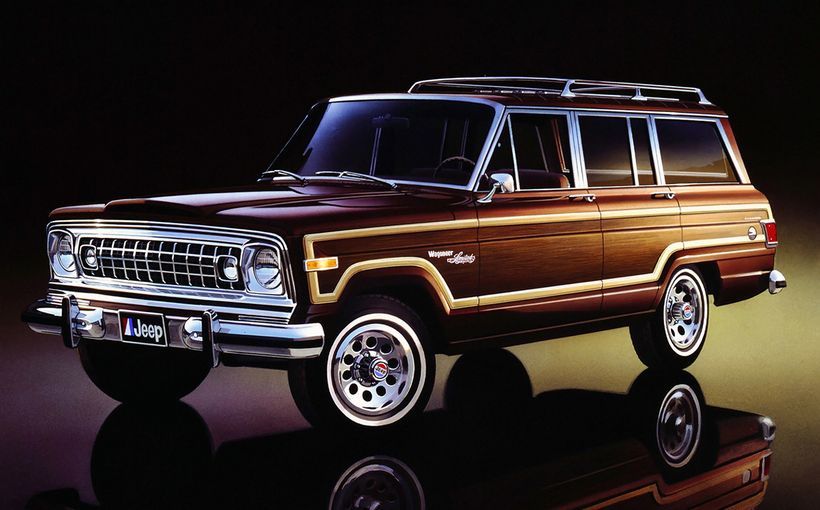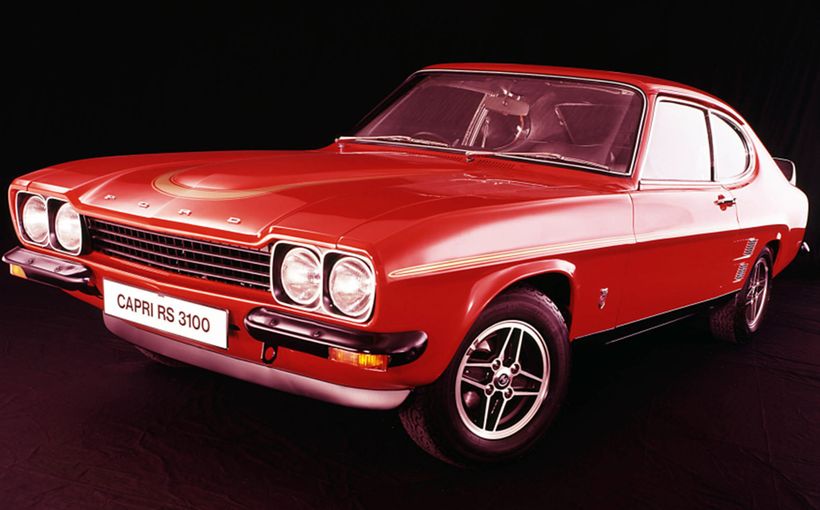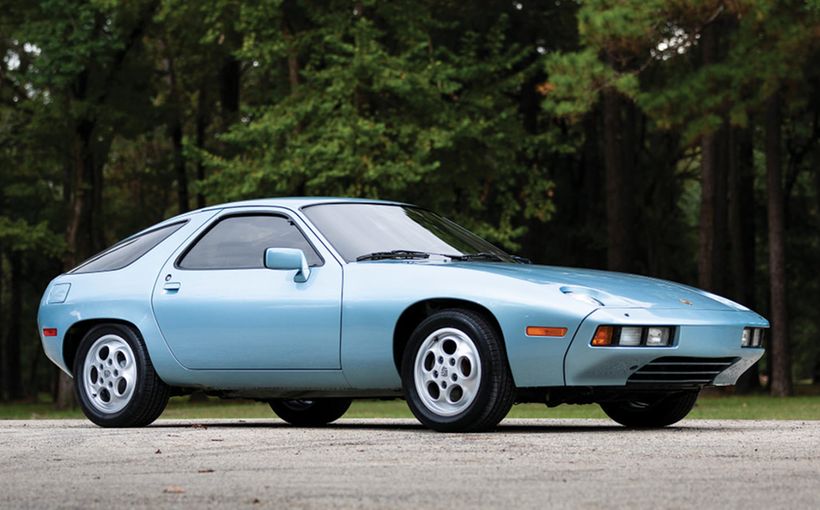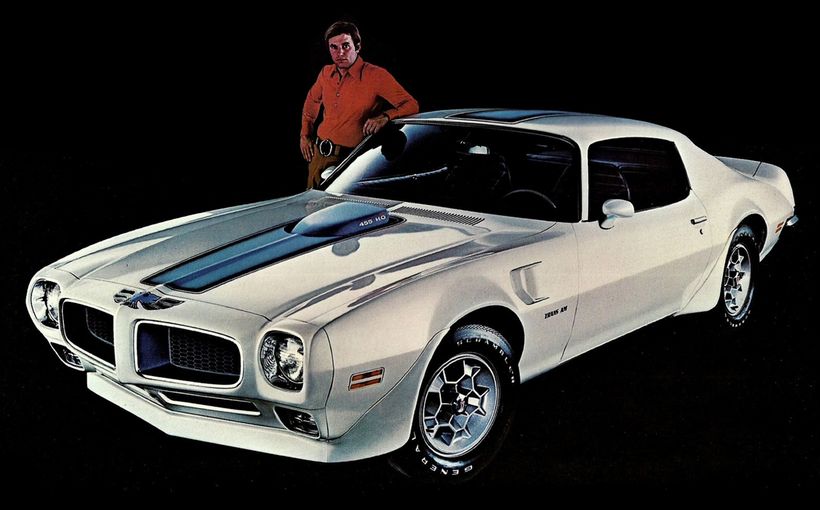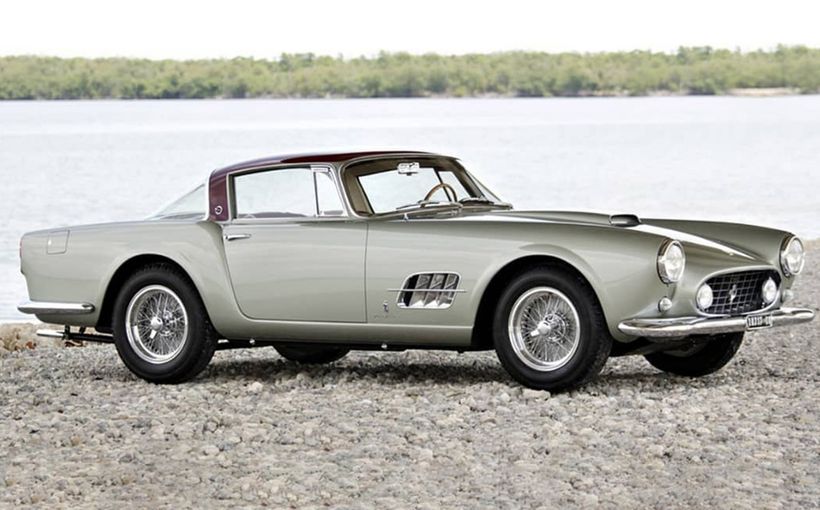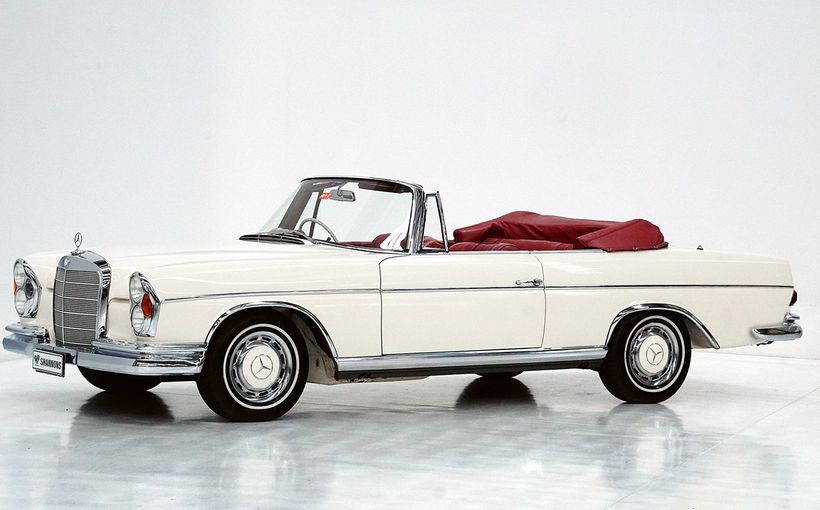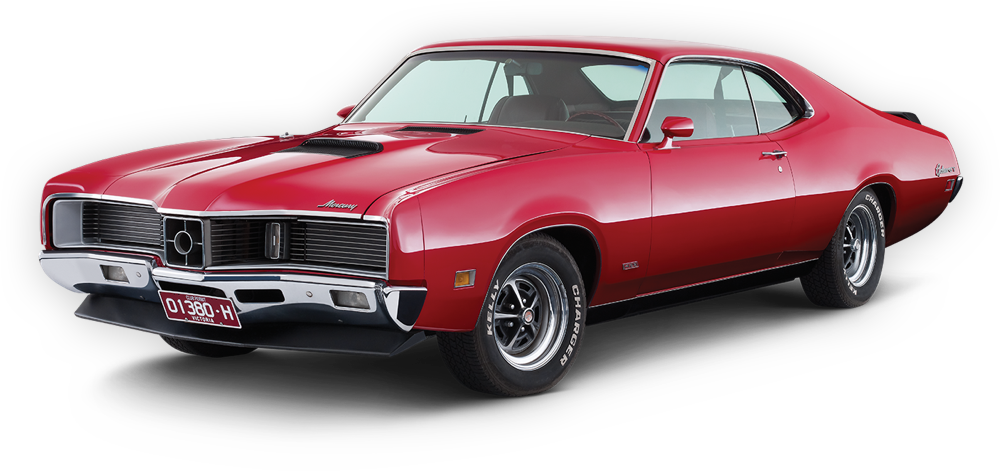Daimler SP250: Coventry’s fast but flexible ‘Hemi Under Glass’

Hemi V8s and lightweight fiberglass bodies are usually associated with ‘Funny Cars’ and ‘wheel-standers’ on the US quarter mile. However, back in the late 1950s, UK prestige car manufacturer Daimler combined these two elements to create a unique roadster which, despite its notorious chassis flex, scored a dominant Bathurst win.
Now, when we say ‘Bathurst’ we’re not talking about the annual Armstrong/Gallaher/Hardie-Ferodo 500. This Mount Panorama race, which was won at a canter by Leo and Ian ‘Pete’ Geoghegan, was the first and only (until its resurrection in 2016) Bathurst Six Hour, which catered for a mix of series production sedans and sports cars.
Whether it was intentional or not, there’s no denying that this unique race held on the NSW Labour Day long weekend also showed that Bathurst was a ready-made alternative for the burgeoning Armstrong 500. After three years on the crumbling Phillip Island circuit, the annual 500-mile race was in desperate need of a new home for 1963. Bathurst was clearly the best option. The Armstrong replaced the Six Hour and the rest, as they say, is history.

However, in 1962 the Bathurst Six Hour Classic was seen by many as a new and innovative event quite different to the Phillip Island race, with the potential to grow into a major annual attraction all of its own. So, in winning Mount Panorama’s first production car endurance race, the Daimler SP250’s achievement is arguably more significant than Australian motor sport history has acknowledged.
The Geoghegans’ victory was an impressive demonstration of the speed, handling and durability of the Hemi V8-powered British roadster during six hours of racing on one of the world’s toughest road circuits. The SP250 also enjoyed competition success in the USA, both of which will be examined in this story.

Daimler SP250: fast but flawed
In the mid-1950s, before Daimler was bought out by its Coventry neighbour Jaguar Cars in 1960, it commissioned development of a new range of cars to be powered by a V8 engine (in two cubic capacities) of its own design and manufacture. One of the prototypes was a sports car, which gained enough momentum at board level to become first cab off the rank.
With Daimler eyeing lucrative exports to the USA, where Chevrolet’s home-grown ‘glass-bodied hero - the Corvette - had recently been upgraded with V8 power, the British firm determined that its new roadster should also have a fiberglass body to reduce weight, development time and tooling costs.
The SP250 was the work of in-house design team Edward Turner and Jack Wickes, with its fiberglass roadster body mounted on a 14-gauge steel ladder frame chassis with a substantial cross-brace (or ‘cruciform’ in Daimler speak) in the centre section below the cockpit.
Suspension was conventional coil-spring double A-arm at the front with a leaf-spring live rear axle. However, it was one of the first production sports cars to be equipped with four-wheel disc brakes and buyers had a choice of a four-speed manual or three-speed automatic.
It was under the bonnet where the SP250 shone brightest. Its small but efficient 2547cc (155cid) pushrod V8 designed by Turner featured a compact 90 degree V-angle, free-revving oversquare bore-to-stroke ratio, robust five main-bearing crankshaft and aluminium cylinder heads with hemispherical or ‘Hemi’ combustion chambers.

With 8.2:1 compression and twin SU carburettors, the little Hemi V8 offered after-market tuners great potential to increase performance. Even so, in standard form it was rated at 140bhp (104kW) at 5800rpm with maximum torque of 155ft/lbs (210Nm) at 3600rpm.
Given the SP250’s kerb weight was less than one tonne (940kg) it had an excellent power to weight ratio which blessed it with stunning performance for its time. A road test by the UK’s The Motor magazine recorded 0-60mph (100km/h) in 8.9 secs and a top speed of 123.7mph (199km/h). By comparison, the revered Austin Healey 3000, also released in 1959, needed 11.7 secs to do 0-60mph and had a lower top speed of 115mph (185 km/h).
The Daimler’s only major negative was a lack of torsional stiffness in chassis and body, which was blamed for bad scuttle shake over bumps and doors which could suddenly spring open. As a result the SP250 earned a reputation for being ‘flimsy’ which along with its polarising styling didn’t help sales.
Although a B-spec version (produced under Jaguar’s ownership) brought some much needed chassis and body strengthening, the slow-selling SP250’s fate was sealed with production ending in 1964 after five years and less than 3,000 units produced. However, the little Hemi V8 lived on in the Jaguar Mark 2-based Daimler 2.5 sedan until the late 1960s.

Hemi power wins friends in power
Given the Daimler SP250’s exhilarating 200km/h performance, it immediately attracted the attention of British law enforcement officers.
The Metropolitan Police in London ordered a small batch of black SP250s which were allocated to the Traffic Department as ‘interceptors’ for speed enforcement duties. These cars were equipped with three-speed autos, which were better suited to the daily rigours of police work without the clutch wear suffered by manual cars working continuous shifts.
According to Brian Long’s book Daimler V8 SP250, the roadster also found favour with other speed enforcement units in England including the Bedfordshire Police, for patrolling the first section of the freshly completed M1 motorway in 1959. It’s also claimed that the SP250 was used by police highway patrol units in Australia and New Zealand.
Not surprisingly, the SP250 also attracted the attention of sports car racers in the UK, USA, New Zealand and Australia. According to SP250 owner and racing enthusiast John Abel (www.racing-sp250.co.uk), more than 130 races held in the US between 1960 and 1967 are known to have had SP250s entered, with most of those events sanctioned by the Sports Car Club of America (SCCA).

And it was under the SCCA umbrella that the SP250 achieved its greatest championship successes in production sports car racing thanks largely to Duncan Black, son of Duncan Black (Snr) of Black & Decker power tools fame.
Black was a skilled racer who competed for more than a decade in a variety of marques including Corvettes, MGs and Lister MGs, Coopers and Ferraris. However, his achievements in a Daimler SP250 (chassis no: 10033) in SCCA competition, in which he regularly trounced British and European rivals, were second to none.
Black’s results spoke for themselves from the moment he started competing in the SCCA’s E-Production National Championship in 1960. He won eight of the 12 rounds and scored almost double the number of points of the runner-up. He also finished every race, achieving a perfect finishing record.

Black also entered the annual Sebring 12 hour sports car classic that year. Although the SP250 was effectively stock standard, Black and co-driver Malcolm Woodward proved its excellent durability by finishing seventh in class and 34th overall against many specialised race cars.
Easily winning a championship at his first attempt prompted the SCCA to move Black and his SP250 up not one but two divisions for 1961, or from E to C Production. The only other car to do this was AC’s Ace Bristol roadster.
As intended, Black found victories harder to come by, but he still won three of the seven rounds to finish second in the championship to Peirre Mion’s AC. Black and the SP250 did not compete in all rounds of the 1962 season, but still salvaged fourth place with a victory in the opening round at Daytona.

1963 was Black’s final SCCA season and he ensured the Daimler SP250 went out a winner, claiming his first C Production title and second championship in fine style, highlighted by another opening round win and finishing no lower than fourth in the remainder.
John Abel, who owns Black’s winning SP250 (chassis 10033), has noted numerous modifications made to improve the car’s performance during its SCCA career, including the addition of a limited slip diff, anti-tramp rods, anti-sway bars and uprated coil springs, plus a stout roll-over bar and changes to the wheels, windscreen and side screens.
Even so, it remained largely stock standard as required by the rules, which is a testament to the Daimler SP250’s inherent sporting qualities.

The Australian Connection: Mad Max and the Geoghegans
The Daimler SP250 was a rare sight in Australian production sports car racing during its heyday in the 1960s, largely because (like all other markets) it was not a big seller here.
However, a single-minded racer that did persevere was Max Brunninghausen, who was a regular starter in Marque Sports Car races at Warwick Farm and (with suitable modifications) Improved Production sports car events at other NSW circuits in the early to mid-1960s.
Opening the bonnet of Brunninghausen’s bright red SP250 in Improved Production form was a sight to behold. The Hemi V8 was fed by four twin-choke Weber carburettors mounted on cross-over inlet manifolds with extremely long runners, reminiscent of Chrysler’s famed cross-ram induction of the same era. Brunninghausen was usually amongst the top six competitors in both classes.

Without doubt the highest profile drivers to dabble in local Daimlers were Leo and Pete Geoghegan. By the early 1960s the famous racing brothers were synonymous with success in a variety of black touring cars, sports cars and open-wheelers in a team run with military discipline by their father Tom.
In an interview with Australian Muscle Car magazine, Leo Geoghegan was more complimentary about the SP250 than Jaguar engineers and most magazine road testers had been. He expressed a genuine admiration and affection for this much-maligned car in explaining how he and his brother became Daimler SP250 racers in 1961.

“We got involved with the Daimler thing because that was a lovely sophisticated car that was made of fiberglass. People still thought fiberglass (bodywork) was no good, you know. Well, they were good cars, but they were £700 dearer than an MG. You could buy an MG for £1300 and the Daimlers were two grand (£2000).
“Hercules Motors (local importer) had a vacant tram shed at Leichhardt (in Sydney’s inner west) with a hundred of those Daimlers that they couldn’t sell. We knew the bloke from Hercules Motors and he said ‘we’re in trouble with these cars’.
“Production sports car racing was becoming very popular, particularly at Warwick Farm. The bloke from Hercules Motors drove one out from Leichhardt to our workshop at Liverpool (in Sydney’s outer-west) and we took it for a run down the side street and it went like stink. I told him the car would win around the Farm and I asked him if he had a budget. He said ‘oh, we can spare £50’. Fifty pounds!
“So for £50 we took the cylinder heads off and Merv Waggott gave them a port and polish and that was all. Goodyear gave us a set of tyres for the car and that was our racing budget! We won 23 races with it. Each time we had to give it back to them on Monday and pick it up for the next race meeting.”

Bouyed by the Geoghegans’ winning performances, Hercules Motors was keen to build on their success by entering a car in the 1962 Bathurst Six Hour Classic. Here was a golden opportunity to prove that the expensive British roadster was not only fast but also durable.
The inaugural Six Hour, organised by the Australian Racing Drivers Club (ARDC), attracted a bumper entry broken down into six retail price-based classes or divisions. Four of those catered for Production Touring Cars comprising Division A (up to £900), Division B (£901-£1050), Division C (£1051-£1250) and Division D (£1251-£1700).
There were also two Production Sports Car classes - Division E (up to £1500) and Division F (£1501-£2000). No surprise that both of these classes featured entirely British marques (not long before the Japanese invasion) with Austin Healey Sprites, MGA and MGA Twin Cams, Triumph TR4s and Morgan Plus 4s.
The Geoghegan’s Daimler SP250 was the only one entered and according to Leo was only accepted after Hercules Motors did some fast paper-shuffling to ensure it just snuck in under the £2000 retail price threshold.
“(ARDC) priced the ceiling price under the Daimler’s selling price because they didn’t really want the Daimler in it. But Hercules Motors brought out a special model with no hardtop, no (heater), no radio, no bumper bars (although the Bathurst car had them); it was painted black because that was our racing colours and it got in under the wire in price.”

Although the potent SP250 was easily the fastest car in the field, with some practice reports claiming lap times as much as eight seconds faster than its closest pursuer, after official qualifying the front row of the grid belonged to two MGAs. The lone Daimler started on the outside second row having qualified fourth fastest - a little foxing perhaps?
Even so, the Geoghegans and their SP250 duly delivered on their pre-race favouritism, storming ahead to complete a total of 104 laps between the race’s 11am start and 5pm finish to win Class F by four laps. They also completed the most laps, so were the ‘outright’ winners as far as the press, fans and history books were concerned, even though no outright winner was officially recognised.
“It was a bit of a doddle actually. The Daimler was the quickest car there and we won it quite comfortably,” Geoghegan said.

The SP250 was mechanically faultless during its 398-mile (642km) winning run, apart from the driver’s door springing open. Although this problem is universally blamed on a lack of torsional rigidity, Leo Geoghegan was adamant the fault lay only with the latch itself on the Bathurst car. To be fair, it could well have been one of the later (stiffer) B-spec models.
“A door latch came loose in my first stint and I had to drive holding the bloody door shut with my elbow. If the door kept flying open I would have been black-flagged. At the first stop we wired or roped it up. It wasn’t a failure in the car, it was just a loose bloody latch and the door opened.”
Either way, the Geoghegans’ victory was arguably the most significant win in the southern hemisphere for this often maligned British roadster. Combined with its SCCA success and police interceptor roles, perhaps history has judged this polarising and intriguing sports car too harshly.
After all, what other British sports car of the 1950s was powered by, of all things, a home-grown Hemi V8 with four-wheel disc brakes and a 200km/h top speed?



